Ever dreamt of a business model like Udemy?
If you are looking to create online course marketplaces, you are in a sweet spot!
Do you know that Udemy is powering over 250,000 courses and 73 million students? This course marketplace has reported an average monthly revenue of $26.3 million.
What if you start course marketplace business sites like Udemy?
Trust me, it’s really simple!
In this article, I’ll tell you how to create a website like Udemy using different methods. Without further ado, let’s jump right in.
What Is An Online Course Marketplace?

An online course marketplace is a hub where teachers are able to create, manage, and sell courses, and students can find and take those courses.
Interestingly, the online course itself is often more lucrative than the physical classroom learning.
These kinds of marketplaces benefit students who might need more opportunities to learn this skill in their area. They have made learning possible for all countries around the world.
Because all course videos are available on the internet, anyone with an internet connection can watch them.
From 2019 to 2026, the global E-learning Market is projected to grow at a compound annual growth rate (CAGR) of 14.6%.
As the Internet is ingrained in everyday life, online education is becoming increasingly popular due to its flexibility, on-demand nature, and lack of schedules and boundaries.
However, there are rising trends on popular sites, such as Udemy, Coursera, and Skillshare etc. With their low prices and variety of learning opportunities, these institutions have sparked this boom.
Key Features of Online Course Marketplaces
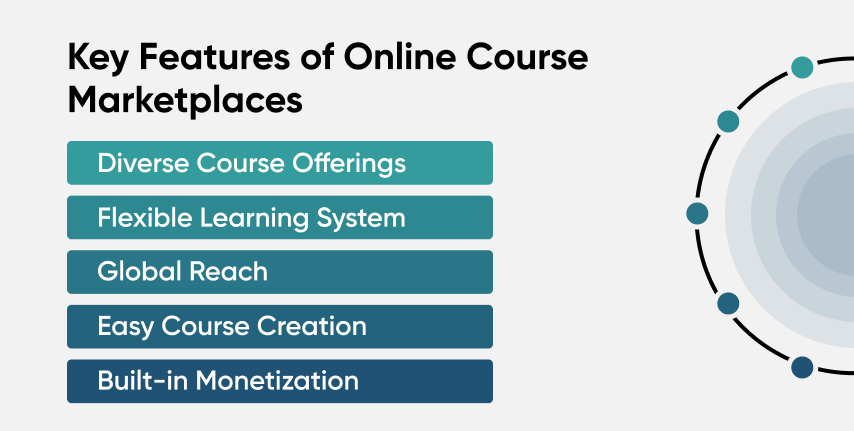
Let’s explore a few key features of the online marketplace for online courses. Some major factors are -
Students and instructors can create personal profiles showing their objectives or goals, what courses they've taken, and how many have been completed.
Instructors can complete and automate the enhanced course processes with their syllabuses, quizzes, and assessments.
Teachers have the chance to earn by hosting and selling their courses with the revenue and commission model structured by the course marketplace.
Learners can interact further with video lectures, downloadable content, and other features.
A complex filter enables you to narrow down your search by category, price, level, and instructor to search for specific courses.
An integrated payment processing service that accepts all currencies.
Easy and quick access to the courses through mobile applications or mobile sites is available.
Students are allowed to evaluate the courses by leaving feedback and ratings for other users.
Analytics and reporting tools help course instructors manage student learning curves and performance.
Providing credits is also a common feature that users look for when choosing a platform.
Collaborative lessons using discussion boards, Q&As, and lessons with classmates.
Advantages And Disadvantages Of Online Course Marketplaces
We already know that the best online course marketplaces have transformed education by allowing everyone to learn anytime, anywhere.
In most cases, this is cheaper than orthodox education methods, and you learn new skills in different parts of the world simultaneously.
On the other hand, while some of these platforms are great, it is imperative to mention that not every user will be happy about them.
Here are the advantages and disadvantages of the online course marketplace:
Advantages of Online Courses Marketplaces
Let’s see some of the advantages of course marketplace for online courses.
Largely Remote Audience:
A major advantage of online course platforms, especially for trainers or instructors, is the global audience they gain. Sites like Udemy, Coursera, and edX, have a huge audience base worldwide.
Teachers are no longer confined to teaching geographically. They can have students from different geographical locations, which multiplies their audience size and impact.
Marketing Support:
Many of these platforms invest in strong marketing efforts to increase the visibility of their courses. This means instructors can spend less time or money marketing themselves.
Actually, it's A difficult task for new creators.
Different Types of Courses:
Each student has the freedom to select coursework from a variety of subjects.
Everyone can participate in coding campaigns or creative writing. These extensive features of this platform are very appealing to students seeking specialized knowledge.
Flexible Learning & Teaching:
In any online course, marketability is helpful regardless of attendance. They are able to access the learning materials without any time limit.
Because one can combine education with work or other activities more quickly than with traditional forms.
Affordable Options:
There are a lot of courses with different price points including free ones available which provide the audience with a number of solutions. This enables learners of all economic levels to engage in the learning process, further democratizing education.
Networking And Community Building:
A lot of such online courses also create an online community through a forum & groups for students. Both students & instructors can connect, exchange insights, and build professional relationships.
Constant Updates:
Instructors can update the content of the courses, ensuring that the material is always current. They maintain ideal prospects for their courses in a constantly changing industry because of this changing nature.
Certification:
After completing most courses, eSocial samples certify students.
These certificates, along with those obtained by students after successful completion of the courses. Also, they help advertise their resumes and LinkedIn profiles.
Possible Revenue:
Most students may view instructors as dominant figures. However, if there are any early-on eCourse options, more advanced, lucrative opportunities will emerge.
Instructors who successfully marketed their courses have already turned it into their primary source of income.
Disadvantages of Online Course Marketplaces
Let’s explore some of the disadvantages of course marketplaces for online course creators.
Revenue Sharing:
People don't need more time to be ready to engage in these types of online course marketplaces despite the massive value they provide.
The majority of revenue shares are over 50%, and some even reach 75%, leaving most instructors with only a pinch of sales. This means humbly, that is why bone one earns one's head spinning.
Limited Branding:
Please note that the branding and customer relations for the Instructors are all controlled, and Bezig is the customer Pitfall.
Due to the platform limitations, instructors are able to strategize about the pitfalls of the construction.
Competition:
There are many courses offered at the moment.
So, there is good competition between the instructors who sell to students. The number of services that require students may not be supplied. This is especially true for those who teach more competitive subjects and niches.
Quality Control:
Course quality on these sites can be very different from one vendor to the next. Instructors who offer high-quality courses may need a higher perception of quality in the marketplace.
So, are you looking for a way to create your marketplace? Don’t worry. It’s no longer tough if you follow the right procedures. Let’s hurry to the next section.
How To Build Online Course Marketplace Sites Like Udemy (Step-by-step)
Usually, it takes a lot of planning and execution to build course marketplace sites like Udemy. Below, you'll find a step-by-step approach that will assist you:
Step 1: Research the Market

A thorough market research is required before creating an online course marketplace. This helps one identify the target audience and its constituents, as well as market demand.
Take a look at Udemy, Coursera, and Skillshare as competitors. Their course offerings and pricing models offer valuable insights.
Also, analyzing the different marketing strategies they use with an emphasis on the users' feedback and their limitations would assist this analysis.
As a result, you will be able to identify what your site offers that will make it unique.
To appraise your marketplace idea, contact prospective users and hear their views using surveys, focus groups, or online communities.
Here are some key points to consider:
Find out what learners appreciate and where their needs still need to be met. By doing so, you will know which courses you should focus on more.
Try to understand giant sites like Udemy, Coursera or Teachable. It will help you identify areas for improvement and position you well to craft a strong USP.
State the essential attributes, such as age, occupation, or preferences. Your platform's success depends on what your customers want and need.
Ask learners what they want most, what annoys them most, and what courses are in demand. Understanding the target audience will influence user interface design and marketing techniques.
Step 2: Select A Niche First

A niche choice and basic website design are the first steps in developing online platforms for selling courses similar to Udemy.
In most cases, this problem occurs when one is attempting to build a full-fledged website from the beginning. So, lowering expectations would be helpful.
By picking a niche, you can narrow down the focus of the design and development to a particular subject or field.
So, How can you choose a Niche?
Your niche defines the core subject areas of your platform and determines your audience. When choosing a niche, ask yourself questions such as:
Which audience do I want to reach?
Are there many courses already created to prepare for the launch?
What is my enrollment target?
Who are the instructors or subject matter experts?
What is my budget?
How should I monetize my website?
So, all in one, focusing on a niche helps you avoid spreading yourself too thin. It also creates a more focused platform tailored to the needs of a specific audience.
Once your niche is chosen, you can go ahead and web design the structure of the platform with ease.
Step 3: Know Your Audience
Develop detailed buyer personas to understand your target audience better. Consider factors such as
Age
Education level
Learning preferences
Professional background.
Utilize surveys and market research to gather data on what potential learners are looking for in an online course marketplace.
Example: Tools like Google Forms or SurveyMonkey can help you create surveys to collect feedback directly from potential users.
Step 4: Consider Some Factors Before Building a Course Marketplace
If you are planning an online course marketplace, there are some essential features you should include to improve the instructor and student experience.
Below is a detailed overview of the essential aspects to consider:
Course Creation Tools

Provide instructors with simple tools that enable them to develop and organize their courses. A variety of rich media content, including images, videos, and interactive quizzes, should accompany such tasks.
For instance, platforms like EzyCourse provide you with a no-code builder to get started easily. And, the platform has a marketplace-building model, so you can build your Udemy-like marketplace with EzyCourse.
The simple process of creating courses will bring more instructors on board the platform and add to the teaching process. Features that enable the learning environment to incorporate different multimedia elements. It will help to improve the level of engagement and the quality of learning.
Student Engagement Tools
While you are trying to hook up students, you need to consider the tools required for student engagement. For example:
Discussion boards
Live questions
Demonstrations.
These elements work where the students are passive participants duty. Also, they can instead be students and actively participate in the content and each other.
Students' attention is crucial for keeping in touch with them and making sure they are satisfied with the content provided. The element that promotes interaction enhances learning and leads to high completion rates.
Payment Options
It is necessary to introduce new payment solutions to provide greater convenience in transactions. Accepting credit cards, PayPal, Stripe, and other forms of payment is very important. The use of alternative payment methods would clear up some problems when dealing with customers. However, it enhances the chances of increasing sales.
User Profiles
A structured profile should allow instructors and students to fill out information about qualifications, interests, and achievements.
Profiles facilitate trust and community building on the platform. They also enhance the possibility of exchanging ideas and working together among the users.
Content Delivery System
It is essential to ensure that the system manages the delivery of the program and content in multiple formats and course materials. This includes videos, downloadable, and quizzes.
Reasons include using different content delivery methods to reach learners with varying learning styles. It enhances learners' interaction with the content.
Search and Find Feature
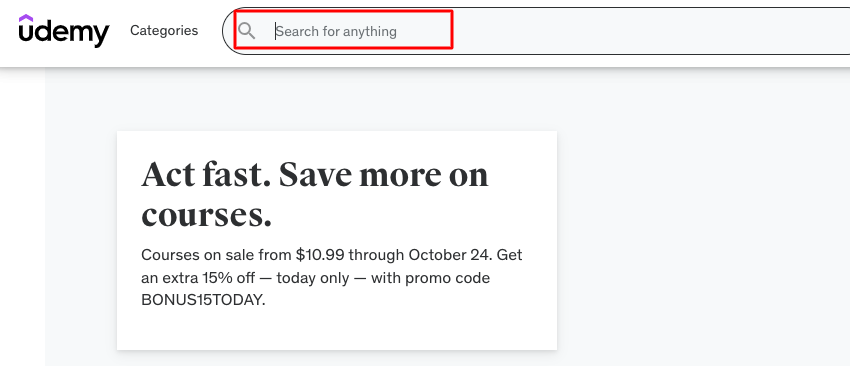
Learners need stronger search and recommendation engines so they can find courses faster.
Students can search for courses that meet their requirements with a practical search function, increasing enrollment.
Analytics and Reporting Feature
Analytical features that provide instructors with the ability to measure and monitor the success of their students. The analytics feature offers instructors information on what works and what doesn't. Thus, it is easier to reform the course or assist the students.
Step 5: Choose A Platform to Create Your Course Marketplace
Selecting the right method is a critical first step when building your online course marketplace.
There are several methods you can take, from using a pre-built platform to developing a custom solution specific to your needs. Each option comes with its own set of advantages, costs, and technical requirements.
Let's look at three different methods of building an online course marketplace, and see which works best for your goals:
Method 1: Build Online Course Marketplaces Using EzyCourse
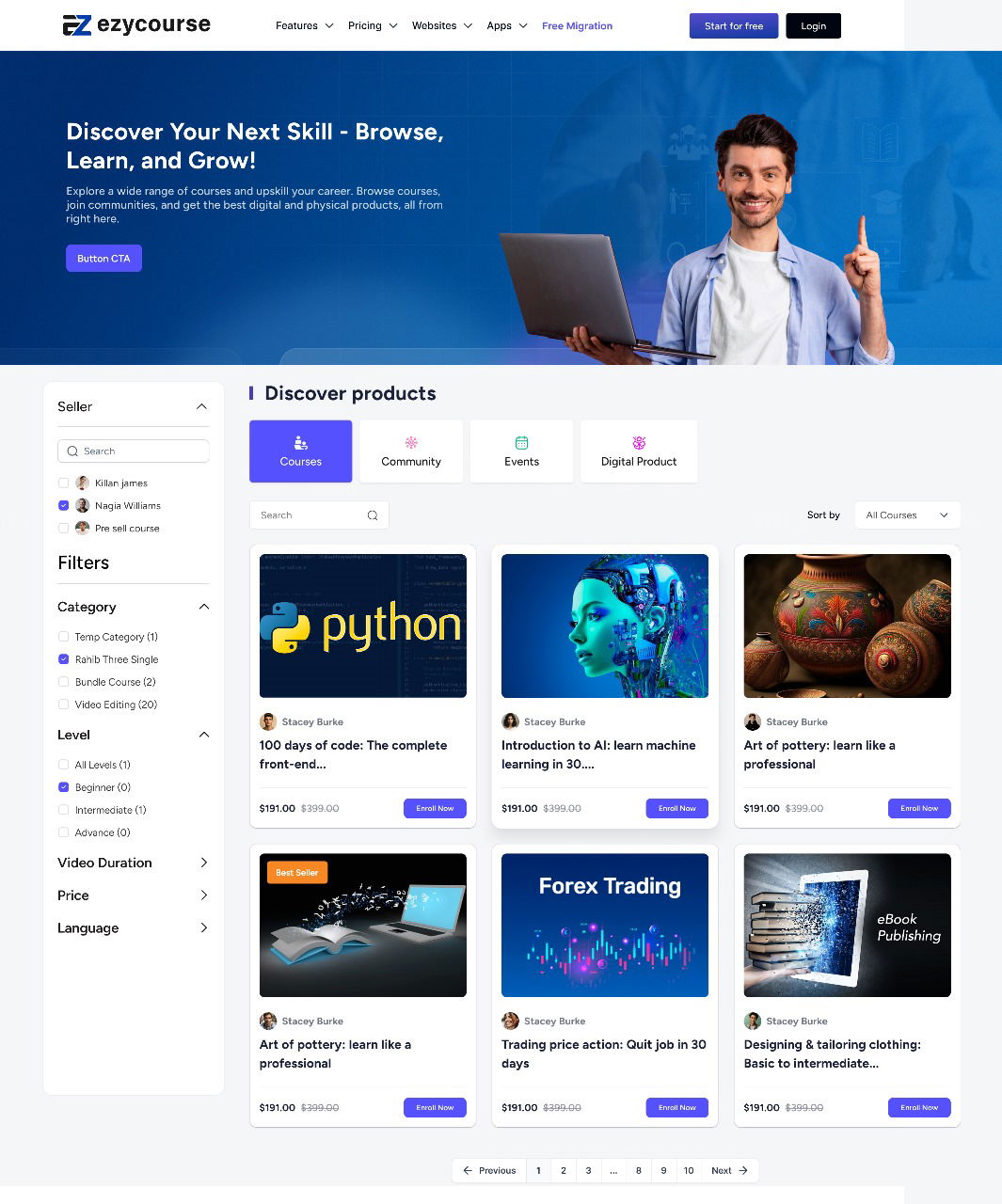
EzyCourse is a popular online platform for course creators to build and host their online course marketplaces.
Multiple vendors can sell online courses, digital products, and physical products on the Marketplace Add-On of the platform.
This feature provides extensive control over seller settings, sales, and commissions to marketplace owners.
EasyCourse offers simple online learning and marketplace maintenance without lengthy programming or high operating expenses. In turn, this attracts content creators looking for monetization and audience development.
Key Features of EzyCourse Marketplace
Advanced Editor
This feature enables you to develop and distribute rich online content by creating a variety of bundles.
For example, courses, memberships, and courses for sale with flexible pricing. It also allows dripping content and pre-selling of courses.
Marketplace Add-On
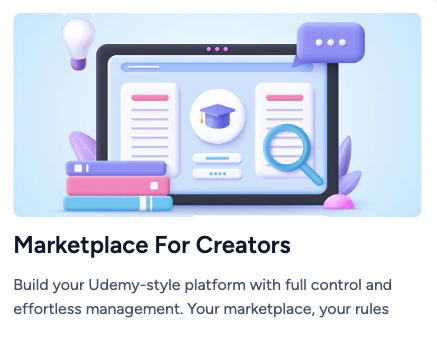
This feature allows you to develop an online marketplace as you would for Udemy. You can enable several other companies or individual content creators to sell their content on your website.
Showcase Your Marketplace
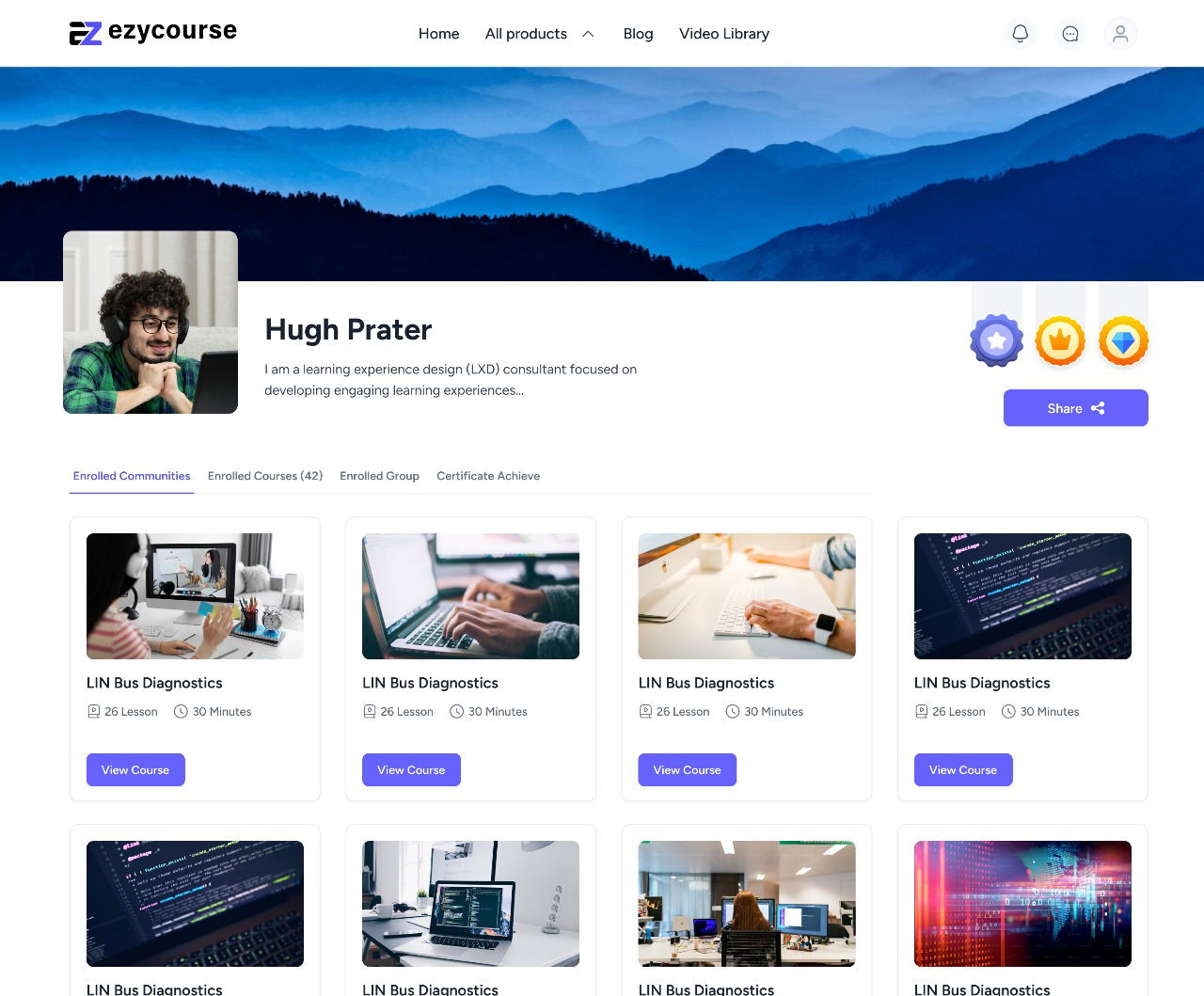
A widget allows you to place the marketplace on your website directly.
Users can search products by various criteria, look at lists of offers, and go to sellers' profiles. This makes the marketplace convenient for both the buyer and the seller.
Manage Sellers
You will be able to control the registration and approval of new sellers. It will ensure that only decent products and courses appear in the marketplace.
They may sell courses, subscriptions, and physical or digital products. If you are a seller in the market, you cannot approve or review other sellers‘ courses.
Commissions & Transactions
On EzyCourse, you can determine standard selling commission values according to the seller.
You also have complete authority over the payout schedule. If you wish to cancel the commission payment, you can do so either by approving or canceling it.
Seller Dashboard
Each seller is provided with a unique dashboard.
It is a dashboard where they can monitor sales, manage products, and stay up-to-date with news, such as commission payments and product approvals.
Best Seller Badge
The site also offers a system that enables the most successful sellers of that platform to receive a “Best Seller” badge. It increases their exposure on the roof.
Community Engagement
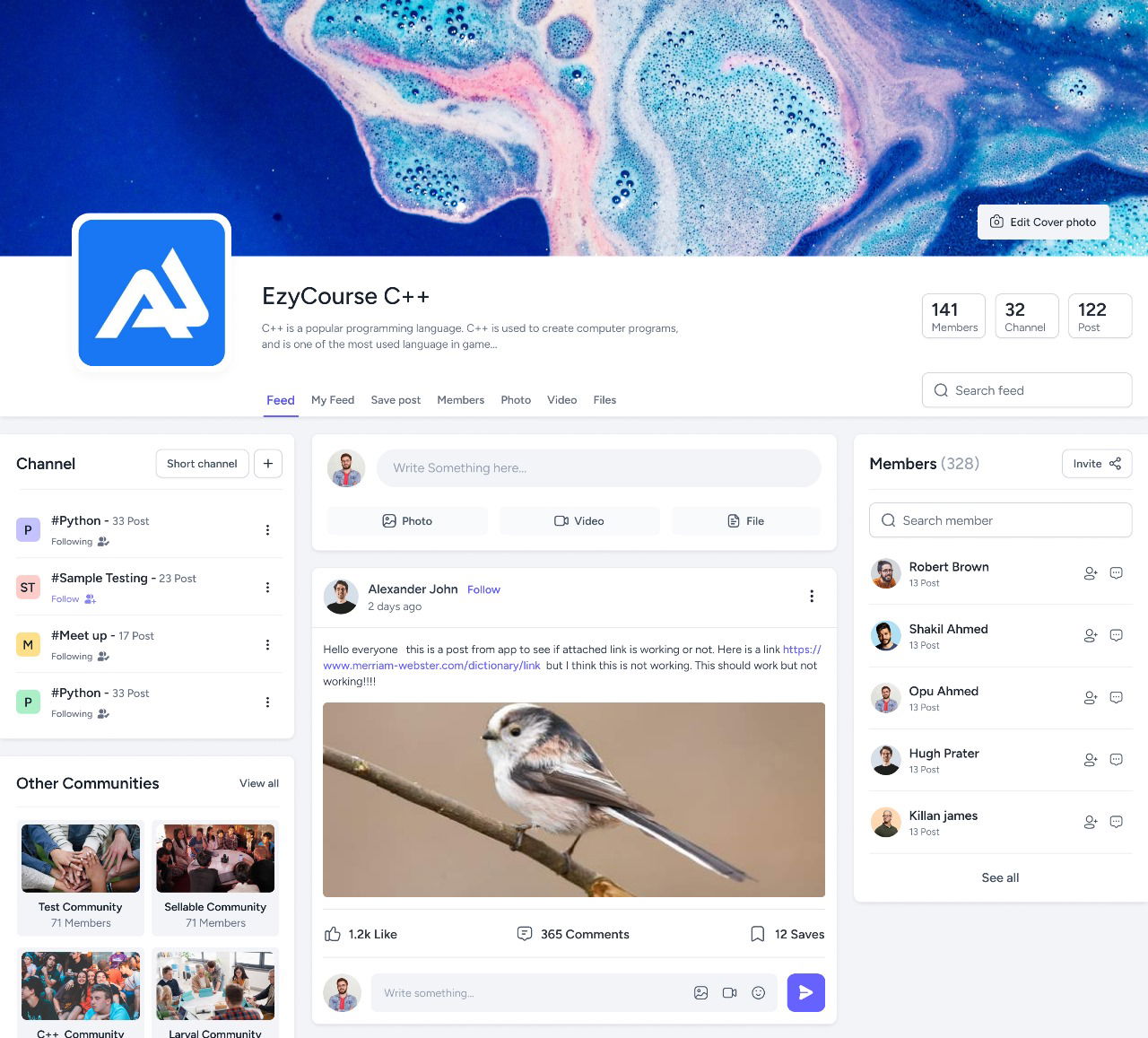
You can easily create a Facebook-like community feed to engage your users with EzyCourse community features. Both instructors and students can engage in a private area for discussion on a feed.
Payment and Security
Payments are quickly processed since there are integrated payment systems. Additionally, some tools help protect your content against unauthorized access (such as digital rights management tools).
User Profile
Each user or teacher will have his own profile with a detailed landing page like this -
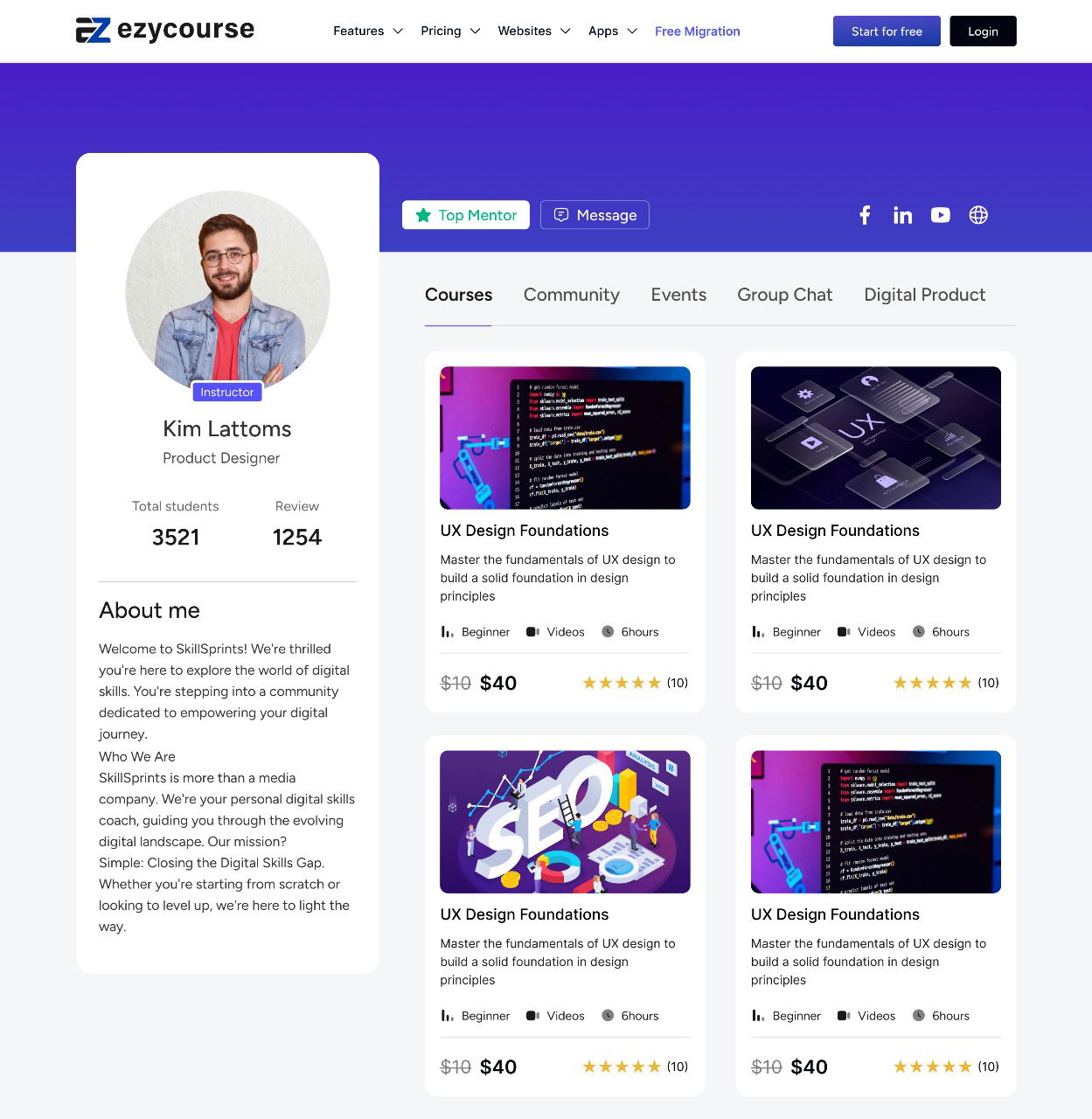
Pros of EzyCourse Marketplace
Skip the high costs typically associated with building a custom marketplace.
You control commission rates for each seller.
Easily add the marketplace widget to your site.
Affordable pricing options, especially for creators with limited budgets.
A user-friendly interface for sellers to manage their products and sales.
Different pricing tiers that scale based on the number of sellers.
Set approval workflows to ensure high-quality offerings on your platform.
Manage all transactions and commissions directly through the platform.
Sellers are instantly notified of important actions, enhancing communication.
Easily scale your marketplace by adding more sellers without complex setup.
EzyCourse charges only a 3.5% fee on sales once the marketplace add-on is activated.

Cons of EzyCourse Marketplace:
After 40 free sellers, you need to purchase seller packages to add more.
Pricing For EzyCourse
To get started with EzyCourse, you can sign up for a free trial. After 14 days of the trial period, you have to pay any of these structures:
Yearly Plans:
Essential Plan: $59 per month.
Pro Plan: $139 per month.
Unlimited Plan: $199 per month.
Elite Plan: $299 per month.
Or, if you want to pay once in a lifetime, there are a few Elite lifetime deals.

That means you'll pay once in a lifetime and the rest of your life is secured, you no longer have to pay any more fees or maintenance costs.
Marketplace Add-On Pricing
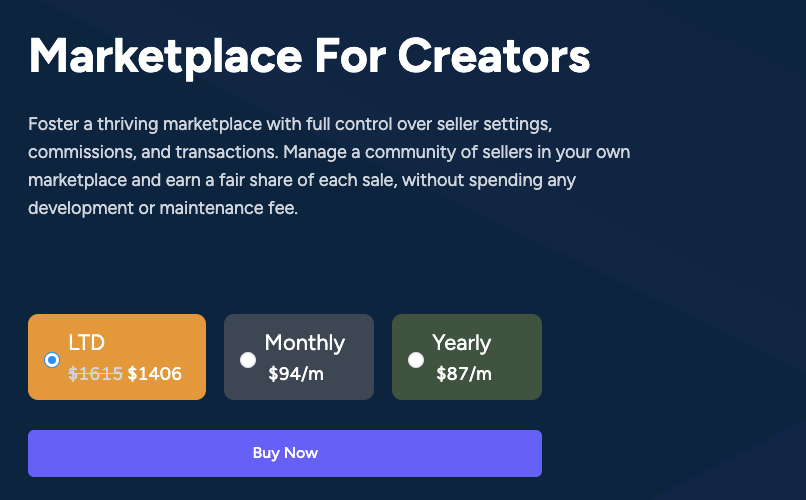
Here are the prices of the EzyCourse Marketplace add-on:
Lifetime Deal: $1406
Monthly: $94/m
Yearly: $87/m
*pricing may be subject to change at anytime
So, that’s all from EzyCourse pricing! You will barely cost $200 per month if you use this platform. Or, you can go for lifetime deals if you have a healthy investment for your business.

How to Build an Online Course Marketplace Using EzyCourse
Creating an online course platform with EzyCourse is easy and efficient when done incrementally. Here, we've outlined an 8-step procedure that you can use to build, run, and expand your course marketplace.
If you are an EzyCourse user, you can check this guide for a detailed tutorial on how to build your Udemy like site with EzyCourse. Check here.
Step 1: Start Your Account and Get Started with EzyCourse Marketplace
The very first stage towards creating and selling online courses is signing up for EzyCourse. Doing this is very easy and takes a few minutes:
To create the user, you will need to access the EzyCourse sign-up page.
After signing up, you’ll need to purchase the Marketplace add-on and then configure your marketplace settings. After that, set the primary marketplace site details: name, description, currency, and other general preferences.
By doing this, you can ensure that even at the early stage of your marketplace such an important factor – its presentation is well considered.
Step 2: Set Up Your Marketplace
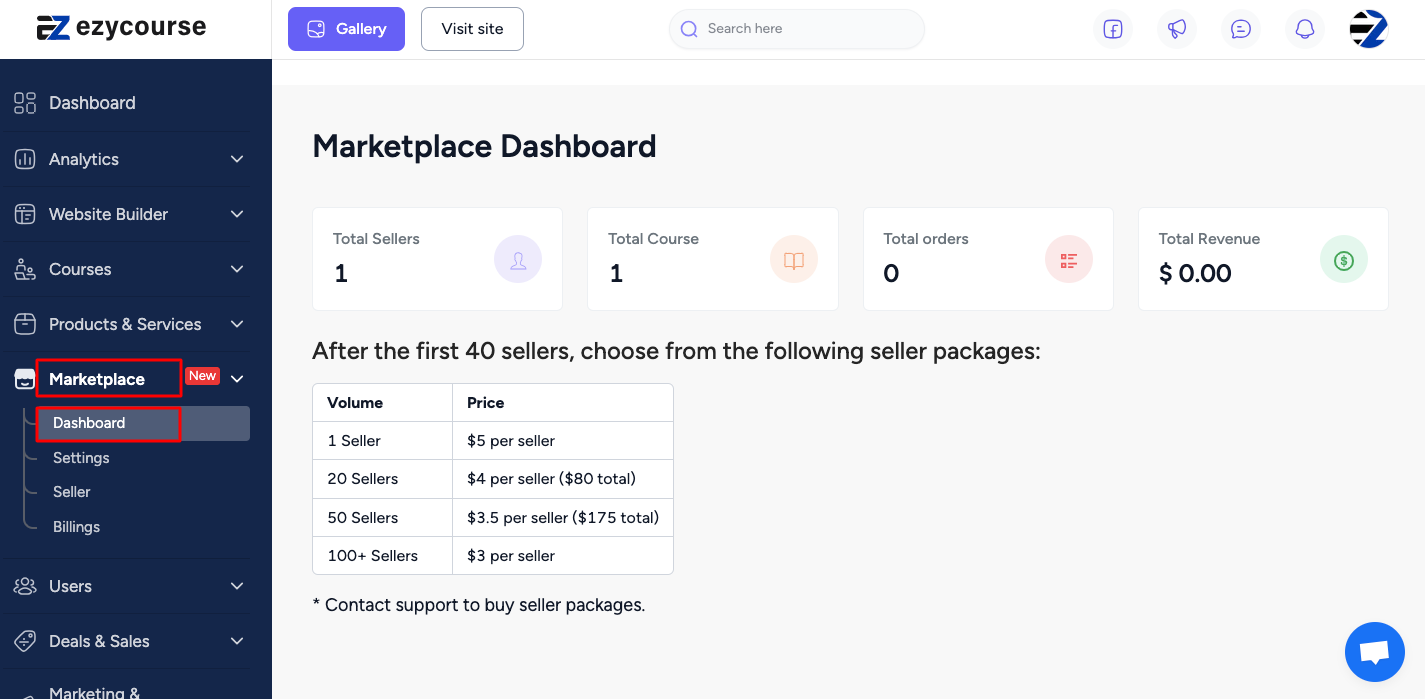
If you are trying to set up a marketplace website, then you have to design your site accordingly. Don’t worry, EzyCourse has a simple drag-and-drop site builder, you’ll need only a few minutes to get started with the pre-built templates.
Now, it’s time to set up Marketplace settings. You can follow this detailed guide to learn how to set up your marketplace with EzyCourse.
Step 3: Add Instructors and Manage Their Roles
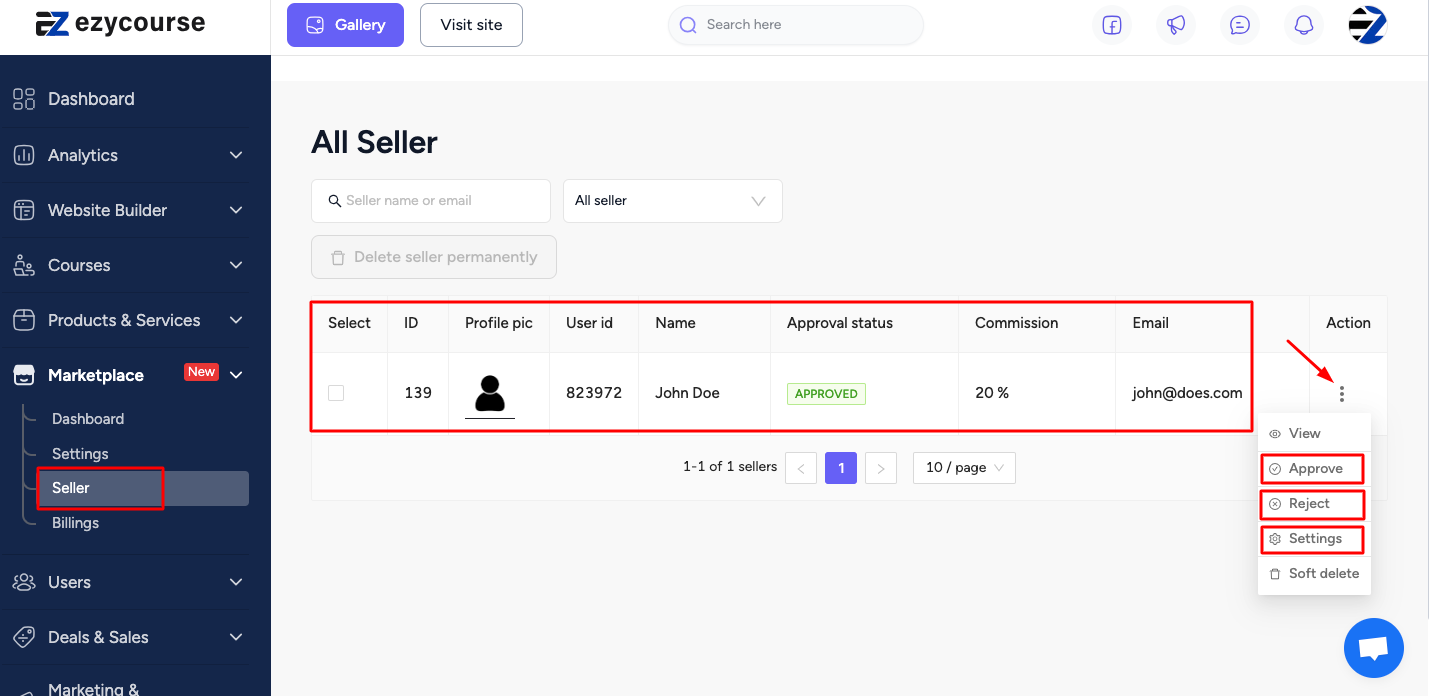
In the current online course marketplaces, instructors are very essential. In EzyCourse you can:
Invite Instructors: Upon setting up your marketplace, you can extend invites to instructors. They can create their courses, upload them, manage content, and oversee student engagement. Instructors can sign up from your site and once they sign up, you can see their data from the dashboard.
Define Instructor Roles: You can customize the level of access each instructor has on your platform. While some users may have full access to a course, others may have partial access.
Manage Permissions: Keep it simple, instructors should be allowed to have administrative access to only their materials and students. Any other materials should be managed by the admin (you) of the marketplace.
See more here: EzyCourse Marketplace User Roles
Step 4: Organize and customize categories (Seller’s task)
Here’s the seller dashboard where they can organize and customize their course categories:
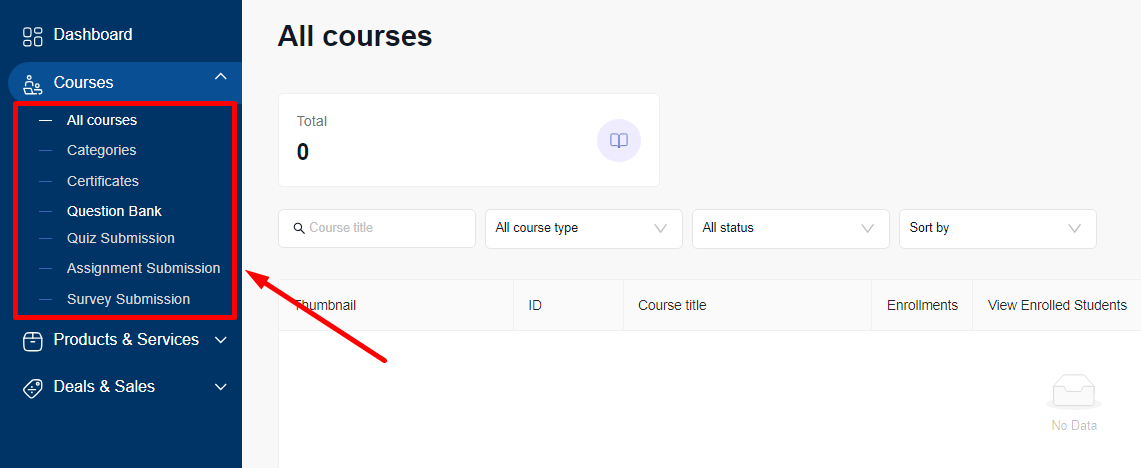
There will be more than one course on your platform, so categorizing them will enhance user experience and SEO.
One can create specific categories such as “Marketing,” “Web Development,” and “Personal Development”. Customizing the look and presentation of the categories.
Step 5: Set up subscriptions and commissions as well as payments
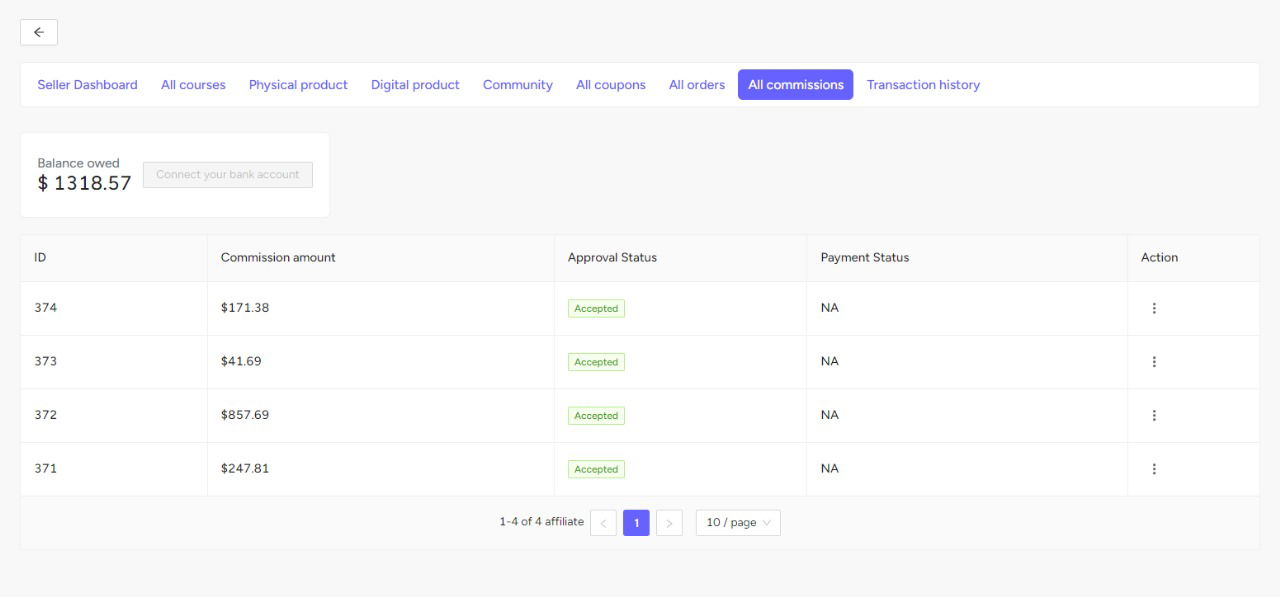
Payments are quite an essential aspect of the revenue generation of your marketplace. And so EzyCourse has provisions that help in various payment setups:
Payment Gateways: Include portals for secure transactions like PayPal, Stripe, and so on.
Subscription Models: Here Customers can make payments routinely for access to certain courses or the whole marketplace. EzyCourse enables monthly, quarterly, and annual subscriptions.
Commissions: For each Instructor EzyCourse allows you to come up with specific commission structures. As a general rule, instructors receive a set percentage of sales commissions following their sales.
Step 6: Automate Marketing and Promotional Campaigns
You will need effective marketing to attract instructors and students to your marketplace. That's why EzyCourse comes with automated marketing tools to help:
Email Marketing: Design automatic email campaigns to keep students informed on announcements of new courses, discounts, or events.
Referral Programs: Generate an assortment of referral links for instructors and students to promote the marketplace.
Discount Codes: There are also promo bonuses that you can create for several courses or specific course categories that induce more sign-ups and courses.
Step 7: Monitor Performance and Collect Feedback
As long as your marketplace works, you will need to keep improving it. EzyCourse provides analytics that allows you to keep track of the activities on the platform below.
Revenue: Analyze the total income as well as course sales revenue and subscription earnings.
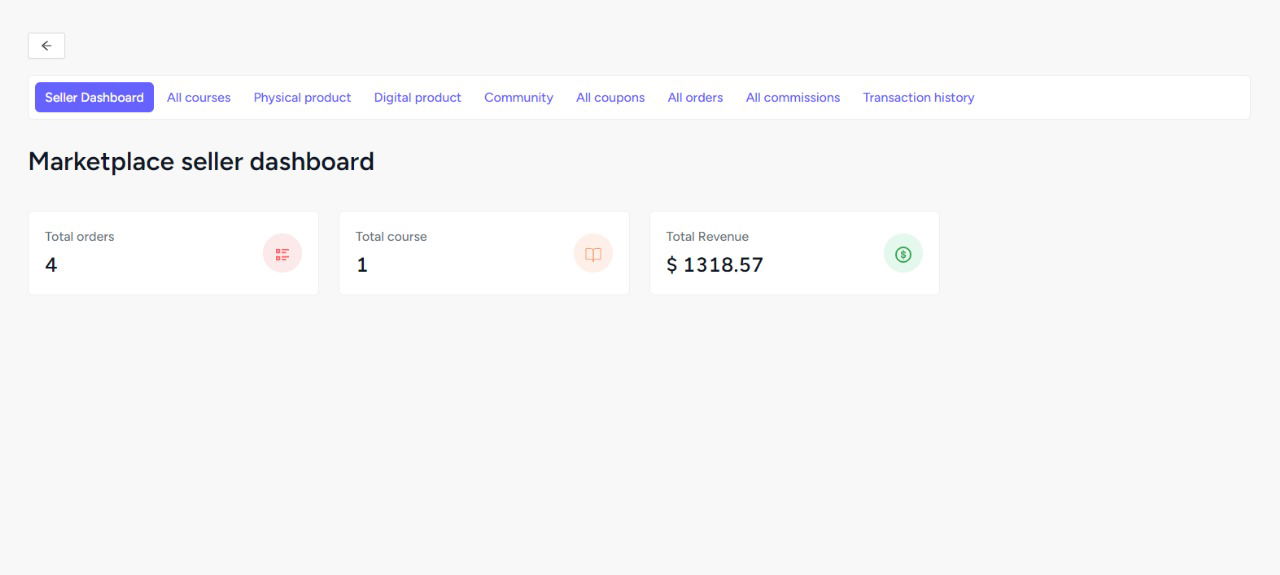
User Activity: Check which courses are most frequently purchased, what the estimated number of students for those courses is, and how their feedback is rated.
Instructor Performance: Gauge how well your instructors are fair in course ratings, reviews, and engagement with students.
Step 8: Continue to Scale Your Business
Scaling up may be necessary as your marketplace expands. EzyCourse gives you the flexibility of adding more instructors. Also, you can expand your course offerings and change your pricing and payment plans.

Method 2: How To Build Online Course Marketplaces Using WordPress

WordPress course marketplaces require some planning, especially in terms of the plugins, themes, and tool combinations to use. Here is a guide on how to create your platform in seven simple steps.
Step 1: Get a Domain Name and Web Hosting
Domain Name
While choosing your domain name, it should be appropriate to your brand and memorable at the same time.
Use GoDaddy and Namecheap services to search for and register a domain if it is within $10-15 yearly.
Web Hosting
As stated above, WordPress websites must have reliable hosting. Some recommended options are SiteGround and Bluehost or WP Engine. All these and many others have hosting plans starting from as little as $3 to $10 a month.
This, of course, changes with respect to the performance requirements. Check out plans that provide free automatic installation of WordPress, SSL certificates, and high uptime.
Setting Up
Several hosting service providers facilitate one-click, easy WordPress installation. It makes the entire Setting up procedure simple and fast.
Step 2: Install WordPress and Choose Basic Plugins
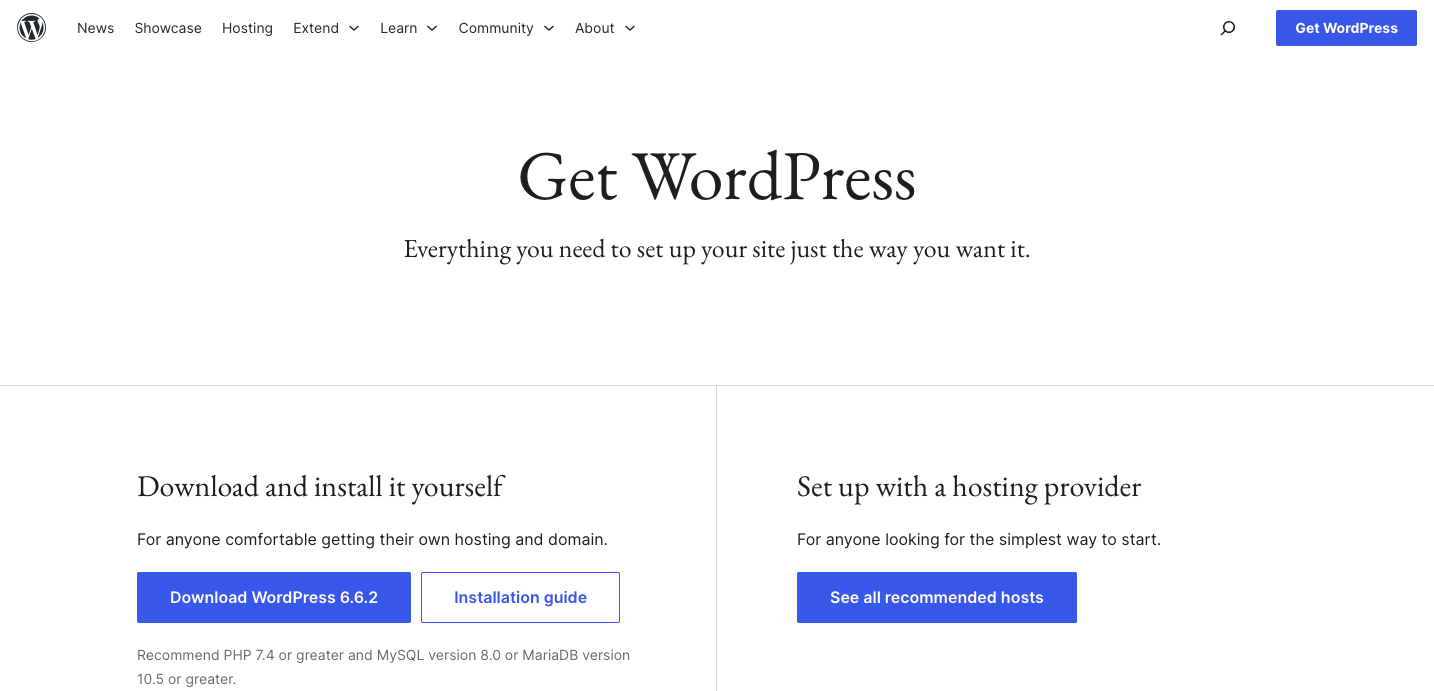
Once the domain and hosting have been put up, go to the hosting account's panel. Then, click on the Install WordPress button for a single-click upload of WordPress.
After that, Set permalinks for your website pages for better SEO (Settings > Permalinks > Post Name).
Go to the General Tab to change the time zone, title, and tagline of the site.
Some useful plugins that you can use -
WordPress SEO plugin Yoast is used to optimize search engine results.
WP Super Cache is used for site speed amplification.
Wordfence for securing the website.
Costs: WordPress software is free, but there may be charges involved for specific premium plugins or templates.
Step 3: Proceed to Download and Activate the LMS Plugin
The primary purpose of a Learning Management System (LMS) plugin is to allow one to sell courses and training materials. Plugins that can help LMS Recommended:
LearnDash
LearnDash is a professional Learning Management System (LMS) plugin Extension for WordPress. It is dedicated to creating and managing a marketplace for selling online courseware.
There are numerous features in LearnDash, including a simple course builder, complex quizzes, and multi-level courses. LearnDash also uses a video and audio format in combination with text to cater to different teaching approaches. Apart from its standalone features, it also works well with WooCommerce, BuddyPress, and Zapier, enhancing the performance of the course management system.
The basic version of LearnDash is only $199 per year, which includes the moderate and regular.
LifterLMS
LifterLMS is a freemium LMS plugin with comprehensive features for creating and selling registry courses. It is designed to target multi-instructor capabilities since it permits more than one educator to work on the same platform. LifterLMS has integrated learners’ retention features, including badges, certificates, and course emails, which tend to enhance the learning aspect. The plugin also provides sailing facilities with the help of online payment companies like PayPal and Stripe.
The core version of the plugin is free. A premium plan, which contains additional features, starts at $99 per year.
LearnPress
As far as LMS plugins for WordPress are concerned, LearnPress is quite flexible and freemium at signup. They make it easy for users to create, edit, and sell courses on the internet.
LearnPress facilitates multi-instructors, thus building alliances among teachers. Several features are included in the plugin. Besides the ones mentioned previously, such as quizzes, certificates, and course reviews, to make it more engaging.
In general, the core plugin is free. However, additional premium add-ons are also sold, which extends the essential functions of plugins, such as more payment nila gateways. And more complex analytics, which are likely going to attract extra charges.
How to set up?
First, go to Plugins in the WordPress dashboard, locate your LMS plugin and click on the Install Now button.
Second, go to the plugin settings.
Then, create a course structure or define student roles and payment methods, either Stripe or Paypal.
Particular attention should be paid to enabling quizzes, forums as well as drip-feed content.
Step 4: Choose and Customize an e-Learning Theme
While listing the products within the mailing, make sure you select a theme that is meant to make your marketplace look more professional than this one.
There are professional themes devoted to this purpose, including Eduma (created with LearnPress) and Astra (compatible with all LMS).
Eduma:
Designed for course markets, it has many instructor features and blends well with LearnPress.
Astra:
Within this section, we are primarily focused on light, fast, and adaptable themes. LearnDash and LifterLMS are well supported in their use of many plugins.
Customization:
Change the colors, fonts, and layout of your theme. There are lots of themes with page builder tools such as Elementor and WPBakery. So feel free to customize.
Import Demo Content:
Most eLearning layouts come with demo content. So you can use this content straight away. Demo import allows you to get the ready structure that you can fill out with your text, images, courses, and so on.
Step 5: Enabled Multi-Instructor Support
The multi-instructor marketplace platform requires many course creators (instructors) to collect. It is one of the steps, which is crucial in growing your company and providing varied courses.
Multi-Instructor Plugins/Add-ons:
LearnDash:
The Instructor Role add-on allows more than one instructor to add content to the courses and manage them.
LearnPress:
Make use of the LearnPress Multi-Instructor add-on to assign management rights of course creation to various instructors.
Revenue Sharing:
Set up commission systems where the instructors get paid on a particular percentage/commission of course sales. An example is where the instructor earns a 70% cut and the marketplace takes home 30% of the revenues earned.
Instructor Profiles:
Enable instructor profile pages. so that students can see the background, expertise, and ratings of each instructor. this helps build credibility and trust within your platform.
Step 6: Add eCommerce Functionality and Set Up Payments
Monetizing your course marketplace is key. You need to integrate payment gateways and offer various purchasing options (one-time payment, subscriptions, bundles).
WooCommerce:
This plugin is one of the most popular eCommerce solutions for WordPress. It allows you to sell courses as products, set up payment gateways like Stripe or PayPal, and manage coupons and discounts.
Add subscription-based pricing to offer recurring payments for courses or memberships.
Course Monetization:
Configure pricing for courses, either as one-time purchases, memberships, or bundled pricing. Set up payment gateways and automate commission payments for instructors.
Step 7: Integrating eCommerce Features for Payment Processing
When creating an online course marketplace, integrating eCommerce features is essential for processing payments. Here are the key steps and considerations:
Choose an LMS Plugin with eCommerce Integration:
Popular LMS plugins like LearnPress, LearnDash, and LifterLMS are designed to support multiple payment methods. These plugins often have built-in integration with gateways like PayPal, Stripe, and WooCommerce.
Set Up Payment Gateways:
Once you've selected your LMS, configure your payment gateways.
PayPal and Stripe are common choices due to their wide usage and security features.
WooCommerce allows for more complex configurations, such as setting up recurring payments, offering course bundles, and applying discount codes.
Enable Commission Structures for Instructors:
For marketplaces with multiple instructors, LMS plugins allow setting up commission percentages, meaning you can share profits from course sales automatically.
For example, LearnPress has features to calculate instructor commissions and payouts, making the management of earnings seamless.
Ensure Security and Compliance:
Use SSL certificates for encryption, ensure compliance with GDPR (for European customers), and follow PCI DSS standards to protect payment data.
Step 8: Customizing the Look and Feel: Themes and Design Tips
Choose an LMS-Compatible Theme:
The design of your marketplace heavily depends on the theme you choose.
Look for themes specifically designed for eLearning platforms that integrate well with your LMS plugin. Themes like Eduma or Coaching (both compatible with LearnPress) are great options, offering layouts that cater specifically to online courses.
Customize Page Layouts and Branding:
Use your theme’s customization tools or page builders like Elementor to adjust colors, fonts, and layouts. Ensure that your brand colors and logo are reflected throughout the site to provide consistency and a professional look.
Optimize User Experience (UX):
Your design should prioritize usability.
Simplify navigation by using intuitive menus and clear calls to action. Ensure that course pages are easy to browse, with clear descriptions, and that the payment process is streamlined. Using tools like AJAX navigation can improve performance and interactivity.
Mobile Responsiveness:
Since many students may access your marketplace from mobile devices, ensure that the theme you select is mobile-friendly.
Test your website on various devices to ensure smooth navigation and readability on smartphones and tablets.
Add Interactive Elements:
To engage users, you can add interactive elements such as student-teacher discussion forums, quizzes, and progress bars. Plugins like BuddyPress and bbPress can help create a community around your courses, enhancing the learning experience.
Step 9: Optimize the Student and Instructor Experience Interactive Features:
It is possible to improve the students' and instructors' satisfaction with an online platform by focusing on interaction, support, speed, and analytics.
You can incorporate more interactive elements like student profiles, badges, and webinars by adding BuddyPress, Zoom, and gamification tools such as BadgeOS or GamiPress.
Support tools like bbPress forums and chatbots are available for such systems to provide information and solve problems for students.
Also, there are many ways of optimizing the speed of the website, including caching plugins. The reporting system is helpful in tracking and monitoring students' progress, completion rates, feedback, etc. This further enhances the learning experience.
How EzyCourse Is Better Compared To WordPress?
Well, creating and managing an online course marketplace is undoubtedly easier with EzyCourse than it is with WordPress. In particular, there is no need for too many plugins or customizations.
Here's how:
Simple But Complete Marketplace:
EzyCourse is self-contained and does not call for external plugins for the marketplace functionality.
In WordPress, multiple marketplace plugins are required. There's no need to buy piecemeal plugins for course management, payment processing, and seller functionality.
Simplified Seller Management:
There is no need for different systems to manage various aspects of sellers. EzyCourse has centralized controls for all these things, including approvals, commissions, and product listings.
On the other hand, when using WordPress, seller management involves different plugins and third-party integrations that may be complicated.
Adjustable Commissions:
It is very easy to determine the rate of commission that a seller on EzyCourse will pay, in other words, configuring it.
On the other hand, it is this progressive selling tool. For effective and timely commission management, the WordPress marketplace seeks to eliminate the use of many proxy services.
Lower Development Costs:
When building a WordPress site, several tools can be expensive if you hire developers or purchase intricate plugins.
On the other hand, with EzyCourse, you are provided with a ready-to-use option that enables you to cut off the cost of development and save time. EzyCourse barely costs you $200-$500 per month whereas WordPress or other solutions can cost you $75 to $15,000 per year.
Immediate Communication with the Seller:
Sellers do not have to wait for orders anymore since orders are instantly sent to them after every product is sold.
Also, they receive notifications of how much commission they have made per sale. Alternatively, setting this up on WordPress would have required creating a lot of emails, creating custom notifications, and creating something from scratch.
Ease of Use:
EzyCourse can be operated even by people who don't have any technical knowledge. A course marketplace on WordPress requires more technical skills to set up and run effectively.
Method 3: Create Complete Online Course Marketplaces From Scratch – Development Steps

Adding an advanced online course marketplace feature can be accomplished with custom development. Further, unlike the available systems, this method allows one to construct a marketplace with its characteristics, interfaces, and additional systems.
In this way, the organization can best serve its needs.
Custom Development Overview
Indeed, custom development is the process of creating new software for a course marketplace from scratch. It is also the process of developing a new software solution to satisfy your needs using an already available software structure.
Besides the website design, it includes the backend, user management, payment system integration, and third-party tool integration.
However, in custom development, you mostly have two available options that will help to solve the issue:
Building from Scratch:
This is where all the necessary work, including functional parts and user interface elements, is done under the order of an individual or a company. It allows total freedom of deployment. However, it entails a lot of TIME and HARD WORK.
Using Frameworks and CMS:
Installing and adjusting ready-made content management systems or frameworks (such as WordPress with Learndash or Laravel) on-site is necessary for this approach.
When Should You Think About Custom Development?
For many users, ready-made course systems like EzyCourse, Teachable, or Thinkific work well. However, in some cases, custom development may be needed:
One-of-a-Kind Business Model:
If the layout of your marketplace is particular and can't be done with standard platforms. Custom development is the best way to go for things like complicated price models, access based on subscriptions, or commission systems with multiple levels.
Advanced Integrations:
It lets you make easy connections with specific CRM tools, marketing automation systems, or internal business software if you need to.
Branding and Design Flexibility:
Custom development gives you complete creative freedom if you want control over all aspects of design and branding and set your market apart from others.
Expectations of a Lot of Traffic:
If you want your marketplace to grow quickly, custom-built platforms let you tweak the system and infrastructure to make it run faster and handle traffic.
Unique Features:
When platforms require unique features, such as AI-based course recommendations, advanced learning analytics, etc., custom development is needed. It lets you come up with new ideas and make these features work perfectly for your market.
Cost Considerations Of Custom Development
Also, think about costs and other difficulties in creating a custom course development platform.
A custom course marketplace offers a degree of flexibility and control. However, it is also necessary to be aware of the costs and challenges that come with the process.
There are additional costs for creating a new online course marketplace rather than opting for a template.
Here are such factors that will affect the price:
Development Team:
The most significant cost in custom development is personnel costs, such as hiring developers, UI/UX designers, and project managers. For each phase of growth, you could require:
Freelancers or agencies:
The costs will ultimately depend on the location and experience of the team members. For example, developer hiring in North America and Western Europe will cost you between $100-250 per hour, while hiring from Eastern Europe or India will cost you $25-75 per hour. For the basic one, this might take about 500-1000 hours.
Full-Time Employees:
Hiring full-time employees will require ongoing salaries, benefits, and overhead. But this is suitable if you plan on building a long-term in-house development team.
Design and User Experience: The cost will change depending on how complex the design and user experience is. If you want custom designs, graphics, and animations, the price will be high.
Hosting and Infrastructure:
Dedicated hosting or cloud computing are essential resources for implementing tailor-made solutions. Depending on your such requirements towards scalability and hosting, this range can be about $500 to $2000+ per month.
Ongoing Maintenance:
As opposed to purchasing ready-made solutions with integrated support, this practice involves custom-building a marketplace. It will also require ongoing support until it is more secure and functional. This may run about 15-20% of the cost of the initial development per year.
Challenges in Custom Development
Time-Consuming:
Clearly, custom development relates to the timeframe of a product.
It is expected that this will take anything between 3-12 months to build, depending on the team and the level of complexity. During this period, you will also interact with developers, designers, and project managers and coordinate their activities.
Unpredictable Costs:
No matter how complete it is, its pricing is AP pricing, which is variable and increases over time. Because of the specific nature of such work, the costs will mainly rise as you go along, especially when you have a changing project.
It causes high demands on development resources and hours because implementers must mobilize for changes.
Technical Debt:
Moving forward, without updating and enhancing the custom platform, it will become obsolete. When developing, remember that if you make mistakes, you will have to make expensive corrections later.
Security and Compliance:
Custom platforms need to incorporate security and compliance requirements such as GDPR or PCI DSS from scratch. Neglecting these elements causes potential threats, security violations, or legal suits.
Marketing And Launch Strategies For Your Course Marketplace
Now let’s explore a few strategies to succeed while launching your course marketplace.
Monetization Strategies For Your Course Marketplace

There are a variety of monetization strategies that course marketplaces can use to maximize revenue. Here’s a deeper look into the most popular ones:
One-Time Purchase
Students pay a single fee for lifetime access to a course. This model is simple and transparent, appealing to users who want to avoid recurring payments.
Platforms like Udemy have successfully used this model, with course prices typically ranging from $10 to $200. Its simplistic pricing and lack of commitment to a subscription plan (Edly.io) appeal to a wide variety of learners.
Subscription Model
Learners pay a recurring monthly or annual fee to access all courses on the platform. This model creates a predictable revenue stream and fosters continuous engagement.
Subscription-based e-learning is projected to dominate the market, accounting for more than half of online education revenue by 2023 (Subscription Flow). Platforms like Coursera and Skillshare utilize this model, offering unlimited access for a fixed fee.
Membership
This model often includes perks beyond course access, such as community membership, exclusive content, or live sessions. It can create a sense of exclusivity.
Freemium
Offer free basic courses, with advanced or premium content available for a fee. This can quickly grow a user base and convert free users into paying customers.
The Freemium model is effective in attracting users. Platforms like LinkedIn Learning offer free courses to build engagement and upsell more advanced content.
Course Bundling
Sell multiple courses together at a discounted rate. Bundles can increase the perceived value and encourage users to buy more.
Bundling increases average transaction value. Platforms offering bundled courses often see higher sales than those selling single courses
Commission-based Model vs. Subscription Model
Choosing between commission-based or subscription models is a critical decision for course marketplaces:
Commission-based Model:
This model involves the platform taking a percentage of each sale made by instructors. Typically, the platform charges around 50%, aligning its success with that of the instructors.
Also, this model allows for scalability without upfront costs for instructors. However, revenue can be inconsistent as it depends on the number of sales, which may fluctuate over time.
Subscription Model:
In this model, users pay a recurring fee for unlimited course access.
Instructors are compensated based on user engagement, such as course completion rates. This model provides predictable revenue and encourages continuous user engagement. However, to justify the subscription cost, platforms need a large content library.
Offering Premium Services for Instructors
To attract high-quality content creators, course platforms can offer premium services:
Platforms can offer instructors the option to boost course visibility through features like highlighted listings or promotional support. This increases enrollments significantly.
Providing instructors with detailed insights into student engagement and course performance helps them optimize their content.
By assisting with ad campaigns and promotions, platforms can help instructors increase their reach and enrollments.
Offering priority assistance to instructors enhances the overall course quality.
Custom-built platforms grow easily as user demands rise.
Features like advanced reporting and personalized recommendations keep users engaged.
Subscription models bring in predictable revenue.
Affiliate Marketing and Partnerships
By promoting partnerships and affiliate marketing, a course marketplace can attract attention and traffic.
Platforms are also targeting new students using an affiliate marketing program. As affiliates increase traffic and sales opportunities, they are paid a certain percentage.
Globally, affiliate marketing has an estimated value of over $17 billion, with projections predicting a growth of approximately $27.78 billion by 2027. There is a growing doubt about affiliate marketing's viability due to substantial investments.
Partnerships are also important. Besides boosting credibility, they also increase the potential audience of the platform.
Educators might increase enrollments for online courses by 20 to 30 %based on educational initiatives.
However, as you target the relevant audience and integrate productive collaborations, collaboration with other industry experts increases participation and completion rates.
This mix of affiliate marketing and partnerships helps build awareness of the marketplace but also builds sustained growth and more revenue.
Challenges To Create Online Course Marketplaces And How To Overcome Them
You may find it interesting to start your own e-learning course marketplace. However, it possesses difficulties too.
Listed below are some common challenges, and tactics to assist in resolving them:
Managing Students' Motivation

Challenge
Fulfilling this goal, especially in the context of online courses, is often a thorn in the flesh. Students cannot encourage each other. So, internal motivation must be infused, and there will be a multitude of distractions, causing students to drop out.
Solution
Include moving images, graphics, and quizzes. The findings suggest that the inclusion of video content in online courses was a major motivating factor.
Set up notice boards or social networking sites so students can share, encourage, and relate their experiences. Modify the course information on a regular basis.
Targeting The Right Audience
Challenge
Engaging the right audience is not an easy task, particularly in a niche market. Without a clearly defined marketing strategy, it’s almost impossible to engage potential students who can benefit from your course offerings.
Solution
Use controlled advertising over social media and search engines to capture the attention of the traffic that you desire. Using Facebook and Google ads to market courses is very effective due to their ability to pinpoint interests, age, gender, and behavior.
Conduct several optimizations on the website, social media, and even the course descriptions. Ranking higher on Google increases the chances of targeting and attracting students who are already searching for related courses (FitCrea).
Also, use influencers and industry professionals to promote your marketplace. In niche markets, working with influencers increases your reach and credibility.
Technical Challenges
Challenge
Creating and managing the technological background needed for an online course marketplace is both required and tricky. The platform should feature course uploads and video hosting, handle payments, and manage users.
Solution
Choosing a robust and scalable platform is essential to accommodate growth and high traffic. Platforms like AWS or Google Cloud allow the marketplace to scale and accommodate more users without the risk of breaking down (ElearningIndustry).
Extend all-around technical assistance to instructors and students. Technical problems are major contributors to frustrations among users. so such services provide a more positive experience.
Regularly maintaining the platform is important. Users will be retained if the platform consistently improves speed and patches security tweaks.
Course Quality And Consistency
Challenge
It is especially a challenge to guarantee the same level of quality and uniformity of course content through different instructors due to a huge content-creating pool.
Solution
Define detailed parameters for a specific course creation. Teachers comply with the required level with an established procedure of content creation, which is crucial to the image of an institution.
Develop strategies to help instructors deliver quality content. Teachable's templates and resources help instructors structure high-quality and professional courses (Ana Santos).
Establish a system for critical elation of the instructors on a regular basis to apply improvement mechanisms for the courses offered.
Monetization And Revenue Generation
Challenge
The challenge of having a revenue-generating model for the marketplace is important as it promotes longevity. The balance between fair payment to the instructors and the profitability of the platform should be gauzed.
Solution
Fees should be collected in the form of subscriptions, one-time fees, and premium fees. By offering a variety of prices to customers, a business is able to generate a bigger customer base, resulting in more business potential.
There should be a commission structure that appeals to instructors and gives returns to the platform. As a way to attract creators, the industry practices 70:30 revenue sharing in favor of instructors.
Use affiliate programs to extend your reach and create new revenue. As an added feature, you pay your students a commission as an affiliate offer.
Security And Data Privacy
Challenge
It is a must to take precautions concerning user data protection as well as platform protection as students and instructors are within a circle of people that may share sensitive information.
Solution
More advanced encryption methods should be deployed for user advancement. Personal and financial data sent and stored using encryption can be assured that be end-to-end.
Checking and localizing vulnerabilities is essential. It is recommended that platforms be checked every three months for any possible issues.

How Much Does It Cost To Build Marketplace Sites Like Udemy?
The cost of building a marketplace like Udemy varies depending on the approach you take. Here are the costs associated with using EzyCourse, WordPress, and custom development:
EzyCourse
EzyCourse offers a more specialized solution for building a course marketplace. Here are the costs:
Subscription Plan: Monthly plans range from $35 to $299.
Marketplace Add-on price: It ranges from $99/month to $1615/lifetime.
Commission Fees: EzyCourse charges a 3.5% commission on each sale.
This makes EzyCourse a very cost-effective solution with comprehensive features designed for course marketplaces.
WordPress
Using WordPress to build a marketplace is a cost-effective option. Here are the typical costs involved:
Domain Name: Approximately $14.99 per year.
Web Hosting: Around $7.99 per month, but you can find deals as low as $2.75 per month with providers like Bluehost.
SSL Certificate: Typically $69.99 per year, but some hosting providers include it for free.
WordPress Theme: Premium themes can range from $30 to $100.
Plugins: Essential plugins for e-commerce and marketplace functionality, such as WooCommerce and WCFM Marketplace, can cost between $50 to $300 per year. (Source 1, Source 2)
Overall, the initial setup cost for a WordPress-based marketplace can range from $100 to $500, with ongoing costs of $75 to $15,000 per year depending on the scale and complexity.
3. Custom Development
Custom development is the most expensive but also the most flexible option. Here’s a rough estimate of the costs:
Small Marketplace: Basic platforms can cost between $100,000 and $125,000.
Medium Complexity: Platforms with more features can range from $140,000 to $200,000.
Complex Marketplace: Advanced platforms with cutting-edge features can start at $350,000.
Custom development involves significant investment but allows for complete customization and scalability.
Why Use EzyCourse to Build Online Course Marketplaces?
Basically, building an online course marketplace can be a complex task, but EzyCourse simplifies the process significantly.
Here are some compelling reasons to use EzyCourse for your online course marketplace:
Exclusive Features
EzyCourse offers a wide range of features that respond to all your online teaching needs.
From easy course creation and marketing to delivery, it covers every aspect of running an online course business. The all-in-one platform eliminates the need for multiple tools, saving you both time and money.
Multilingual Support
With support for over 170 languages, EzyCourse allows you to create a multilingual website effortlessly. This feature is particularly beneficial if you aim to reach a global audience.
Also, it lets users choose their preferred language, enhancing their learning experience.
Multiple Revenue Generation Options
EzyCourse provides various selling options, including smart upsells, add-ons, and tiered pricing. These features help businesses increase their revenue significantly.
You can also create an engaging marketplace similar to Udemy on the platform.
In this marketplace, you can earn commissions by enabling other creators to sell their content.
Community Building
The Creator's Marketplace feature enables you to manage a community of sellers, offering a wide variety of courses and products. It not only helps you grow your platform but also allows you to earn money online without putting in a lot of effort.
User-Friendly Interface
EzyCourse is designed to be user-friendly, making it easy for both course creators and learners to navigate. Its intuitive interface ensures that you can set up and manage your marketplace with minimal technical knowledge.
End Note
Finally, we can say that it's easy and efficient to build an online course marketplace with EzyCourse.
From course management systems to payment integrations and marketing features, it has everything you need to get started quickly.
You don't have to worry about technical complexity with EzyCourse. Plus, its customizable options allow you to tailor the platform to your brand and audience so you can grow with it.
But what about you? Have you ever tried building an online course marketplace, or are you planning to? What challenges did you face or expect to encounter?
Please share your thoughts and experiences in the comments below! we'd love to hear how your journey is going!

![How to Build Online Course Marketplaces Like Udemy [Tips & Best Practices]](https://f.ezycourse.net/2422/cm9wsbmdz03gbx78z6nm5315g.jpg)
![How to Build a Custom LMS for Your Online Course Business? [A Complete Guide]](/_next/image?url=https%3A%2F%2Fezycourse.b-cdn.net%2F2422%2Fcmk0q991m685g8s9nef5o4yt0.png&w=1920&q=75)



